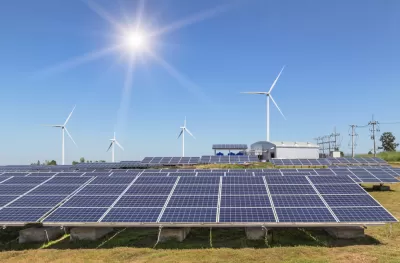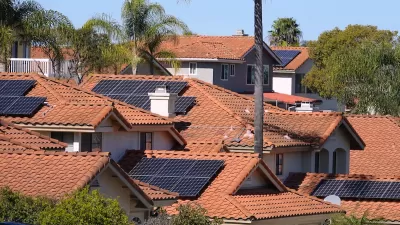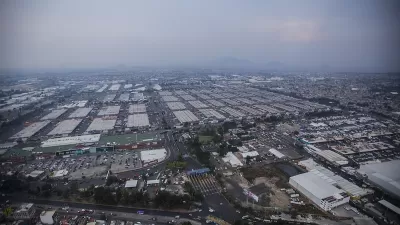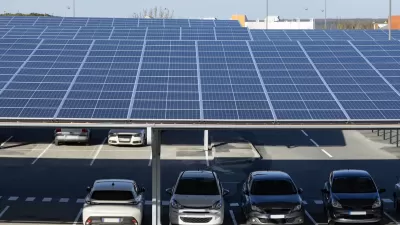The proportion of energy produced by renewable sources in the United States has almost quadrupled in the last decade.

According to a new report, "[t]he proportion of electricity the United States gets from solar and wind nearly quadrupled between 2011 and 2020," writes Tik Root.
The report used data from the U.S. Energy Information Administration to assess the gigawatt-hours produced by wind and solar generation, which both grew while geothermal generation remained stagnant.
Solar generation grew particularly quickly, with the report finding a 23-fold increase since 2011. Wind, which started at a higher percentage than solar, saw an almost threefold increase. Three states — Iowa, North Dakota and Kansas — now produce at least half the amount of electricity they consume from wind and solar.
The report also found that costs for renewable energy have dropped sharply and are projected to continue declining. This, along with aggressive state policies that support renewable energy production in places like California, has contributed to the boom. According to the report, "every state in the country has enough potential from either solar or wind energy alone to supply all of its electricity needs."
The continued growth of the sector doesn't come without challenges such as the effectiveness of transmission systems and the "social acceptability" of projects. Meanwhile, report co-author Emma Searson cautions that energy conservation is just as critical to achieving 100 percent clean energy as increasing renewable energy production, but that goal is now something potentially achievable.
FULL STORY: Renewable energy in the U.S. nearly quadrupled in the past decade, report finds

Planetizen Federal Action Tracker
A weekly monitor of how Trump’s orders and actions are impacting planners and planning in America.

Congressman Proposes Bill to Rename DC Metro “Trump Train”
The Make Autorail Great Again Act would withhold federal funding to the system until the Washington Metropolitan Area Transit Authority (WMATA), rebrands as the Washington Metropolitan Authority for Greater Access (WMAGA).

DARTSpace Platform Streamlines Dallas TOD Application Process
The Dallas transit agency hopes a shorter permitting timeline will boost transit-oriented development around rail stations.

Renters Now Outnumber Homeowners in Over 200 US Suburbs
High housing costs in city centers and the new-found flexibility offered by remote work are pushing more renters to suburban areas.

The Tiny, Adorable $7,000 Car Turning Japan Onto EVs
The single seat Mibot charges from a regular plug as quickly as an iPad, and is about half the price of an average EV.

Supreme Court Ruling in Pipeline Case Guts Federal Environmental Law
The decision limits the scope of a federal law that mandates extensive environmental impact reviews of energy, infrastructure, and transportation projects.
Urban Design for Planners 1: Software Tools
This six-course series explores essential urban design concepts using open source software and equips planners with the tools they need to participate fully in the urban design process.
Planning for Universal Design
Learn the tools for implementing Universal Design in planning regulations.
Municipality of Princeton
Roanoke Valley-Alleghany Regional Commission
City of Mt Shasta
City of Camden Redevelopment Agency
City of Astoria
Transportation Research & Education Center (TREC) at Portland State University
US High Speed Rail Association
City of Camden Redevelopment Agency
Municipality of Princeton (NJ)





























